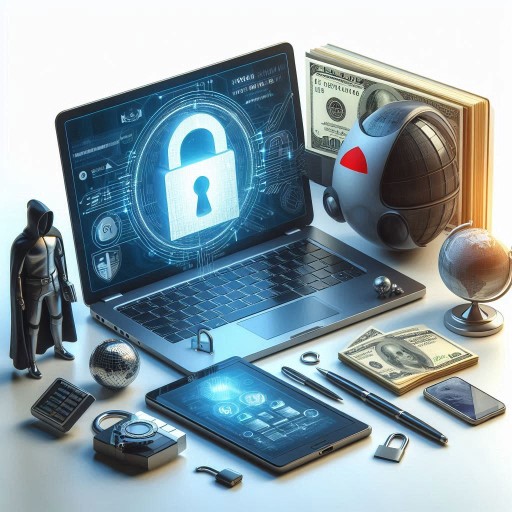TechTrend4u – In this connected digital age, cyber threats are growing and becoming more sophisticated. Individuals and organizations face a real risk of cyber-attacks, which can cause huge losses both financially and reputationally. This article will discuss the different types of current cyber threats, provide real-life examples, and offer steps that can be taken to protect against cyber attacks.

Types of Current Cyber Threats
1. Phishing: Attacks under Deceptive Guises
Phishing is one of the most common forms of cyberattacks. In a phishing attack, hackers try to trick victims into providing sensitive information such as passwords or credit card information by pretending to be a legitimate entity.
Case in point: In 2020, Google reported that more than 240 million email phishing attempts occurred every day. One famous case was an attack on users of the Gmail service, where hackers sent an email that appeared to be from Google, asking users to update their passwords. When users clicked on the link in the email, they were redirected to a fake website that collected their login information.
How to Protect Yourself: To protect yourself from phishing, always check the sender’s email address carefully, avoid clicking on suspicious links, and be sure to verify any requests for personal information through authorized channels.
Read more: Data Privacy: Your Rights to Protect
2. Malware: Malicious Software that Infects the System
Malware is malicious software designed to damage, infiltrate or take over a computer system. Common types of malware include viruses, trojans, and spyware.
Case Example: One of the largest malware attacks was WannaCry in 2017, which spread to over 150 countries and encrypted data on victims’ computers, demanding a ransom for decryption. This attack impacted a wide range of organizations, including hospitals in the UK that had to cancel critical operations and services because their systems were inaccessible.
How to Protect Yourself: Keep your antivirus software up to date, avoid downloading software from untrusted sources, and never open email attachments from unknown senders.
3. DDoS Attacks: Flooding a Service with Excessive Traffic
Distributed Denial of Service (DDoS) is an attack that attempts to make an online service inaccessible by flooding the server with excessive internet traffic.
Case Example: In 2016, a massive DDoS attack targeted Dyn, a company that provides DNS services, causing disruptions to several major websites such as Twitter, Netflix, and Reddit. The attack was powered by the Mirai botnet, which consisted of thousands of malware-infected IoT devices.
How to Protect Yourself: Companies can protect themselves from DDoS attacks by using DDoS mitigation services that can detect and divert excessive traffic before it reaches the server. In addition, strict network monitoring can also help in detecting and responding to attacks quickly.
Ransomware: Locking Data and Demanding Ransom
Ransomware is a type of malware that encrypts the victim’s data, makes it inaccessible, and then demands a ransom to restore access.
Case Example: The Colonial Pipeline attack in 2021 is one example of a significant ransomware attack. The attackers encrypted data on the company’s network and demanded a ransom of 75 Bitcoin (about $4.4 million at the time). As a result of this attack, fuel supply across much of the US East Coast was disrupted for several days.
How to Protect Yourself: To protect yourself from ransomware, it is crucial to perform regular data backups, update software and operating systems to eliminate vulnerabilities, and educate users about the dangers of clicking on links or downloading files from unknown sources.
Read more: Ransomware: Preventing and Countering Attacks
How to Protect Yourself from Cyber Threats
Implement Layered Security
Layered security involves using different methods of protection to cover various weak points. This includes using antivirus software, firewalls, VPNs, as well as implementing two-factor authentication (2FA) for all accounts.
Cybersecurity Education and Awareness
Often, the biggest weakness in cybersecurity is the human factor. Therefore, education and raising awareness about good security practices is essential. Workplace cybersecurity training programs can help reduce the risk from phishing and other types of attacks.
Conduct Regular System Monitoring and Updates
Conducting real-time system monitoring and regularly updating software can help prevent attacks by exploiting known vulnerabilities. Intrusion detection (IDS) and prevention systems (IPS) help identify and prevent suspicious network activity.
Using Managed Security Services
For organizations that do not have sufficient in-house resources or expertise, using managed security services can be an effective solution. These service providers can help monitor, detect and respond to cyber threats proactively.
Read more: Security Tools and Software: Choose the Right One for You
Conclusion
Cyber threats are a reality that all technology users, whether individuals or organizations, must face. By understanding various threats, real-life examples, and protective measures, we can better handle digital security challenges. Cybersecurity isn’t just about good software—it also requires smart practices and ongoing awareness of potential risks.



